The 7 Best Plants for a Forest Garden — Add a Beautiful, Semi-Wild Feel to Your Space
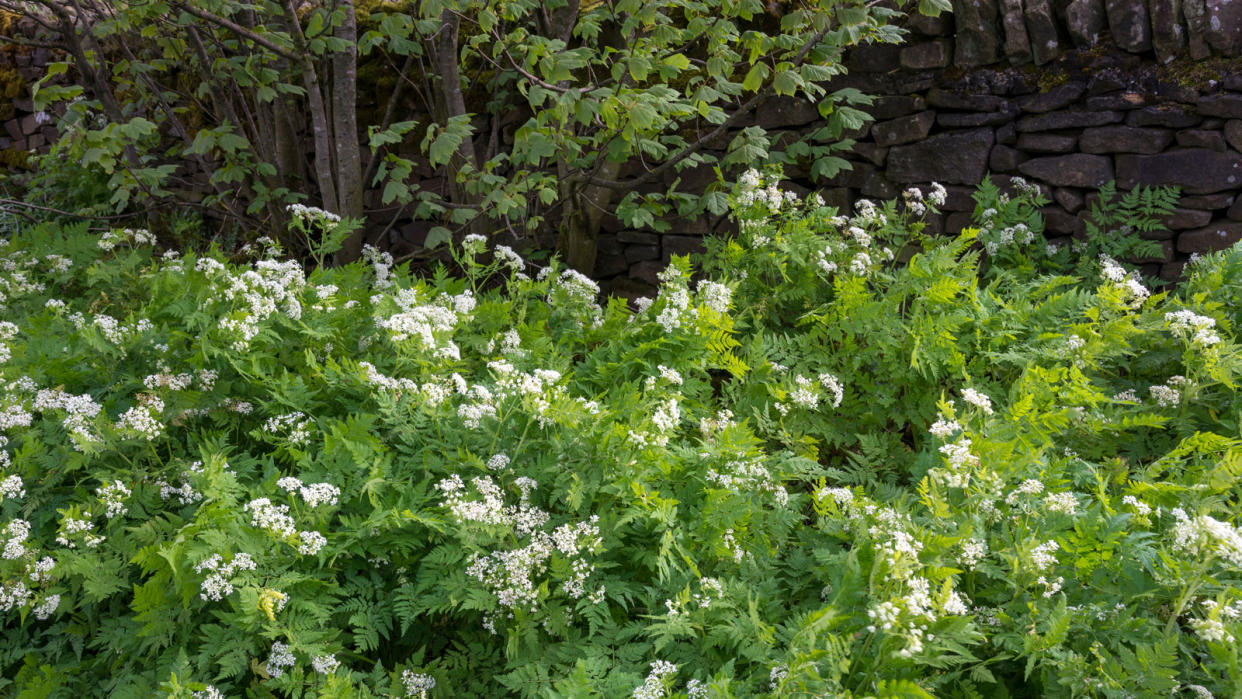
Forest gardens are designed around layers of trees, shrubs, perennials and ground cover plants used in such a way it reflects the look and feel of a natural forest. They are designed to be a diverse, sustainable and resilient way of growing that isn't affected by climate change. The good news is successful forest gardens can be designed in even the smallest of urban back yards.
When it comes to choosing the best plants for a forest garden it's important to factor in the amount of sunlight that is going to be available to the lower layers of the backyard. There are plenty of plants that will tolerate the shady conditions under the tree canopy, but it's also a good idea to design your forest garden with open areas too, so you can accommodate a wider mix of plants.
Hardy native perennial plants are often the best option to deal with the shade in forest gardens as their bigger root systems offer an inbuilt coping mechanism. Many plants that thrive in these conditions have the bonus of being edible. It's important to plant species that will attract beneficial insects too and this way you will keep pests at bay naturally.
Our expert selection focuses on the best plants for establishing underneath the tree and shrub layers to fill out the look of your forest garden.
1. Sweet cicely
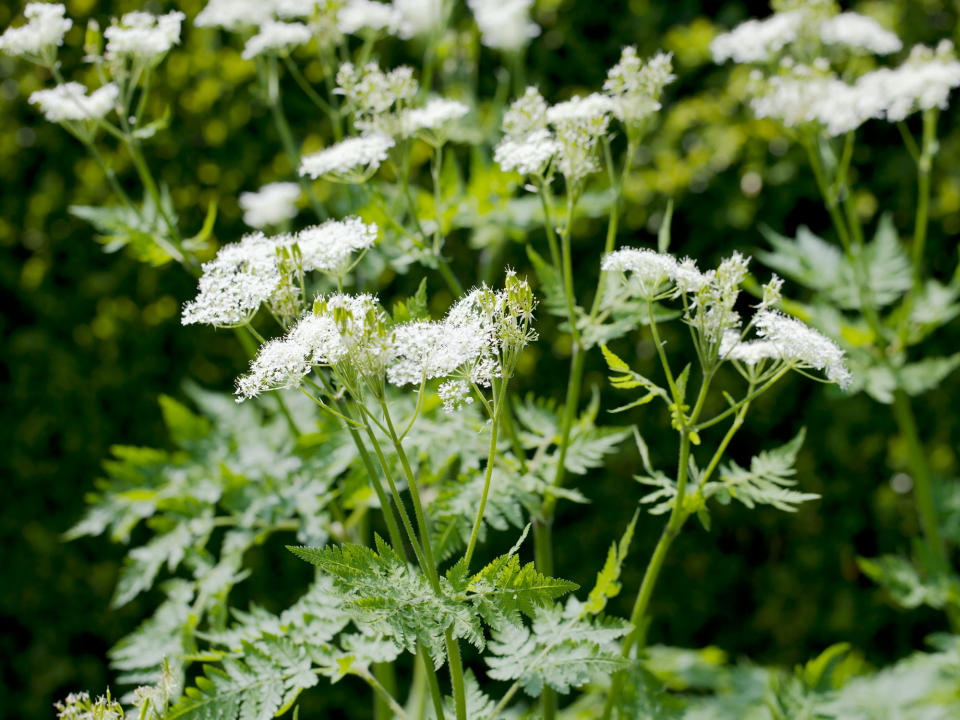
This aromatic herbaceous perennial with fern-like leaves and white umbellifer flowers is one of the best plants for a how to make your backyard look like a forest as it loves growing in the dappled shade offered by larger trees or shrubs, has a long flowering season from May to August, and is a magnet for wildlife, especially bees, early in the season.
'Sweet cicely [Myrrhis odorata] is a lovely flower that attracts plenty of beneficial insects,' says Dani Baker, author of The Home-scale Forest Garden and owner of Cross Island Farms, in Wellesley Island, NY. 'Everything about this plant is edible including the flowers and the beautiful fern-like leaves, which have a flavor like mild, sweet licorice. It's a wonderful ground cover plant, it loves the shade, and self-seeds too.'
The airy and graceful looks of sweet cicely are deceptive as it's easily able to shrug off cold weather. It grows in USDA plant hardiness zones 3 through 7. Even if your plant dies back in the cold season, this frost-hardy perennial will throw up new shoots again next spring.
These Sweet Cicely seeds are $8.99 on Amazon.
2. Violets
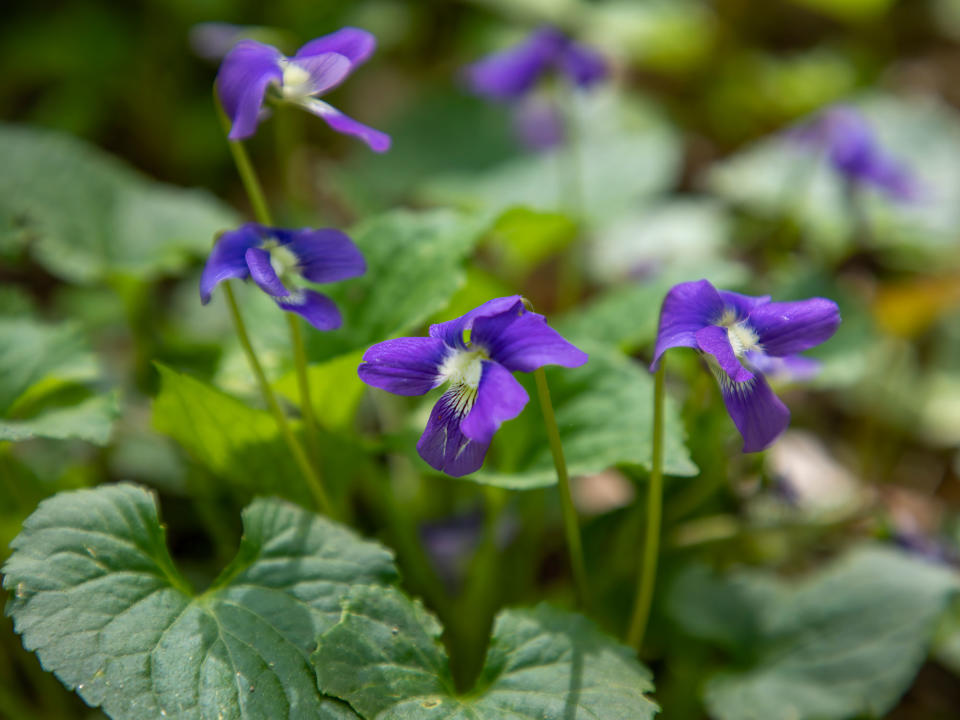
Violets are one of the best ground cover plants to prevent weeds in late winter and spring. The pretty purple flowers are treasured for their distinctive floral scent as well as their delicate look, and are cosseted by a simple wraparound of heart-shaped leaves.
Found naturally in woodland and hedgerows, violets thrive in shady conditions where they will develop longer stems (good if you want to cut them to enjoy the scent indoors). As you would expect of woodland plants violets prefer soil that is moist and rich in organic matter. The hardiness of violets varies depending on the species, with many being suitable for USDA hardiness zones 3-9.
Violets require very little care. They spread rapidly by runner shoots as well as self-seeding, so be sure they don't take over the ground in your forest garden – unless, of course, you want them to.
These violet seeds are $8.97 on Amazon.
3. Siberian pea shrub
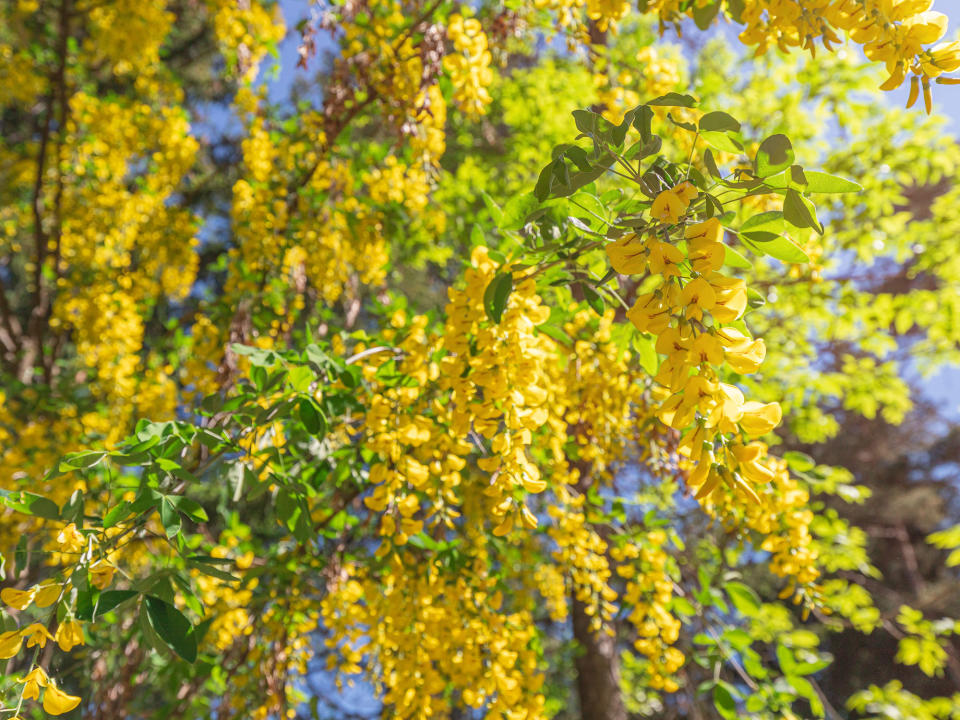
Easy-care Siberian pea shrub (also known as Siberian pea tree) is a hardy specimen that grows in most regions of the US, and is hardy in zones 2-7. It can tolerate a range of soil and growing conditions including shade which means it's one of the best plants for a forest garden.
Prized for its light green, fern-like foliage and clusters of bright yellow spring flowers, it is one of the best plants to attract butterflies. It also offers up a tasty crop of peas in fall. 'Siberian pea shrubs [Garagana aborescens] have edible flowers and tiny pea pods,' says Dani Baker. 'They fix nitrogen, and are dense so make a great windbreak. They are also a great habitat for birds, who like to nest in them.'
The inclusion of plants that are nitrogen fixers is important for the health of your forest garden. Nitrogen is the element responsible for lush green plant growth, and certain plant species, such as Siberian pea shrub, are able to convert nitrogen from the atmosphere into a soluble form usable by plants as fertilizer.
These Siberian pea shrub seeds are $7.95 on Amazon.
4. Comfrey
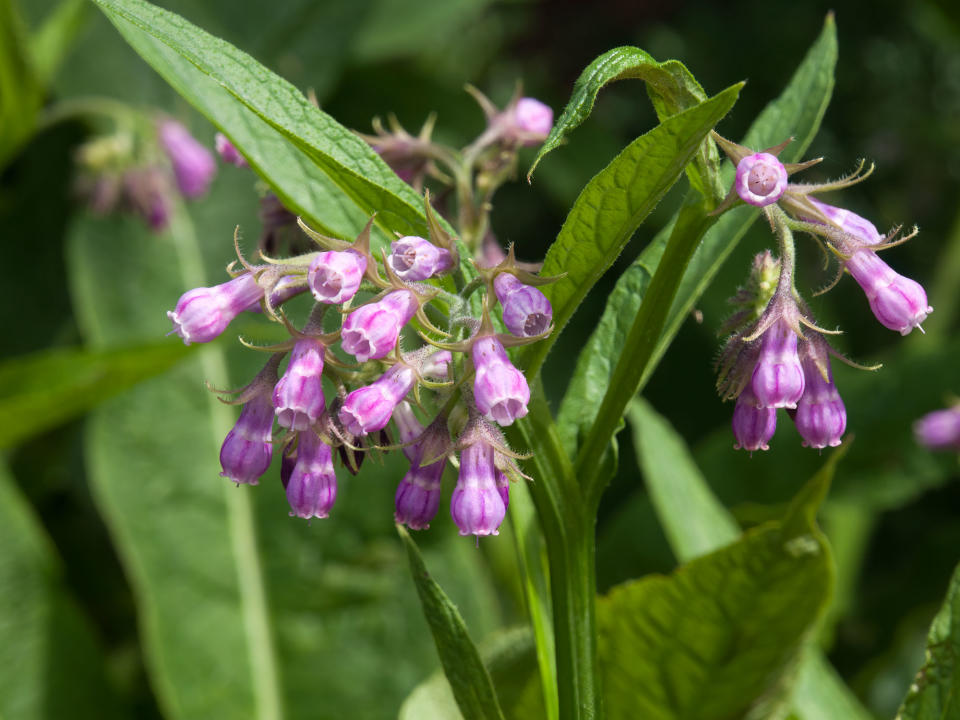
Comfrey's signature clusters of tiny bell-shaped flowers on drooping stems arrive in late spring. It's a fast grower and can reach over 12 inches in height in just a few weeks at this time of year. Pollinators flock to comfrey plants and they make a wonderful addition to any unstructured planting schemes such as wildflower, woodland or forest gardens.
The fast-growing leaves are prized as a fertilizing green mulch or green manure. 'Many years ago, a friend gave me a comfrey plant,' says Amy Stross, an expert in permaculture and landscaping in the suburban yard, and author of The Suburban Micro-Farm: Modern Solutions for Busy People. 'She swooned about the many benefits of growing comfrey. I was a little skeptical about this so-called super plant. But after one season, that plant appeared to make such a difference in the health of my soil that I rushed out to buy more.'
This perennial herb grows in USDA growing zones 3-9. 'Although comfrey is tolerant of a variety of growing conditions, I’ve found it grows best in full to partial sun and in rich, loosened soil. The more compacted the soil is, the more shade it prefers,' says Amy.
Comfrey is a highly adaptable plant that quickly adjusts to a range of growing conditions and requires very little maintenance. But if you want to limit the plant's spread, it's best to grow it in a container or raised bed instead of the ground.
5. Tansy
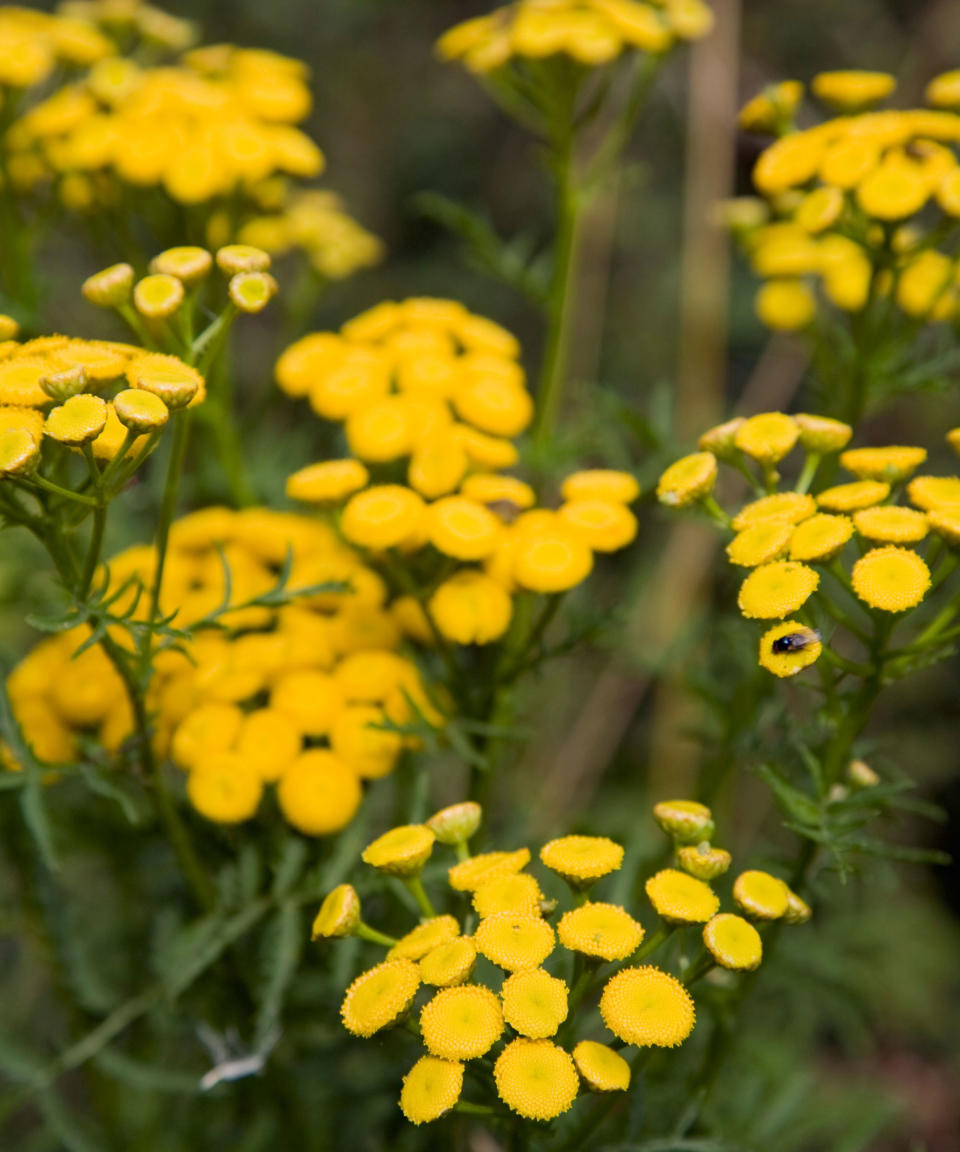
Some of the best plants for a forest garden are those specially chosen for their ability to deal with common pests. Tansy (Tanacetum vulgare) is a perennial herb that has a camphor-like scent that repels some insect pests. It is naturalized in many parts of North America. It is hardy in zones 4-8.
Tansy herb plants are easy to grow and have tiny yellow button-style flowers and delicate fern-like foliage that looks great from spring to fall. Another benefit of tansy is that it adds potassium to the soil, one of the macro-nutrients all plants require for good health.
Masses of fine seeds are produced on the flower heads, and will readily germinate and start new plants. This is why deadheading is important to prevent the plant taking over your garden. 'It can be an aggressive spreader and may seed into the bed,' says plant expert and author Jenny Rose Carey. 'So divide it every few years and deadhead blooms.'
These tansy seeds are $7 on Amazon.
6. Verbascum thapsus
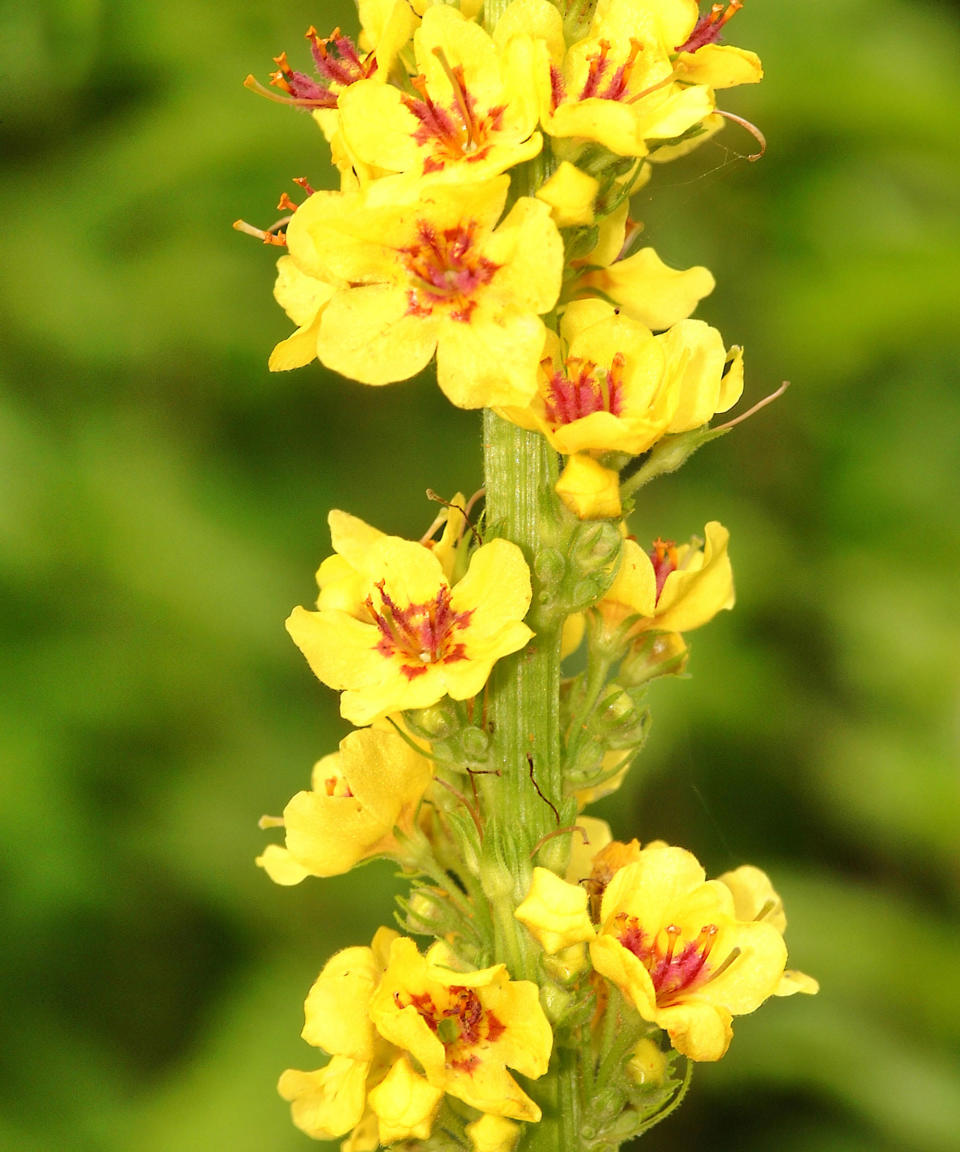
Also known as common mullein, the tall flower stalks of Verbascum thapsus shoot up in midsummer, making a bold ornamental addition to the forest garden. This plant is common throughout the US and is hardy in zones 3-9. The spike-like racemes appear in forest openings, on the edges of woods and in prairies.
The small yellow flowers are grouped densely on each leafy spike from June to September. This plant is a biennial or short-lived perennial that flowers in the second year of growth then dies back. Renew your stock regularly by sprinkling seed around. The length of the flowering period is related to stalk height, with taller stalks blooming longer. The flowers attract a wide variety of bees, butterflies and other insects.
This plant tolerates some light shade so is one of the best plants for a forest garden if you grow it in clearings or other locations where it will get some regular sunlight.
These verbascum seeds are just $3 on Amazon.
7. Nasturtium
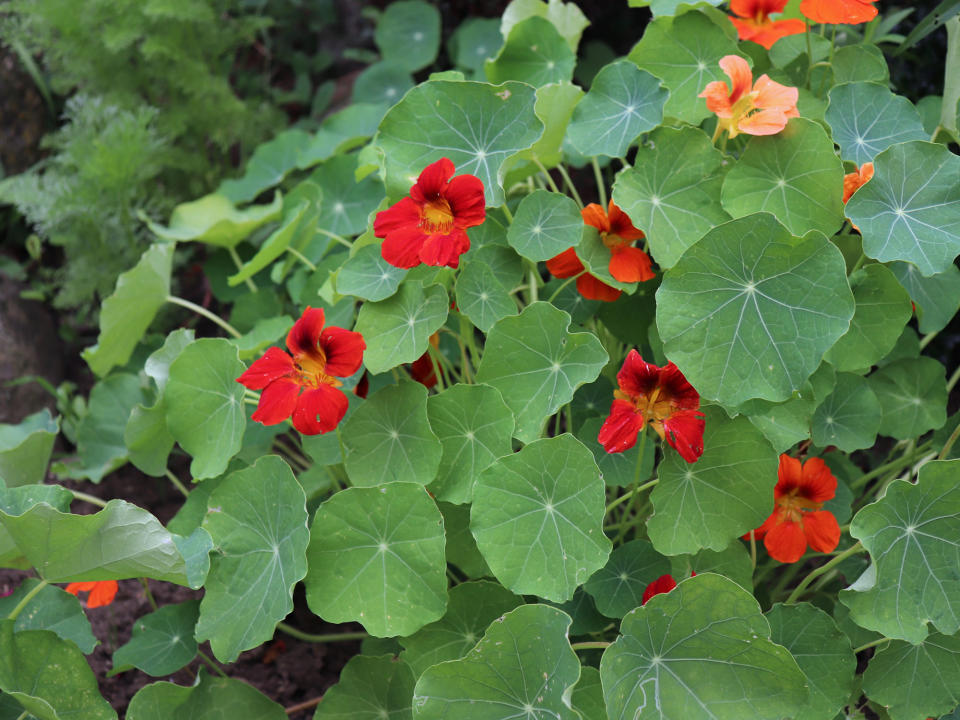
The forest garden is the ideal environment for a layer of climbing plants that will twine up trunks and branches. It's a great way of growing vining plants like passionflower, honeysuckle and trumpet-flower. They will fill the edges and spaces between layers of shrubs and herbacious perennials in a forest garden.
One of the best plants for this is nasturtium, which rambles around other plants in the garden, forming a thick and protective ground cover. 'Nasturtium quickly grow into vigorous spreading plants,' says Christina Chung, plant expert and author of The Layered Edible Garden. 'They're a great choice to fill in empty areas around newly planted shrubs or perennials, covering the ground and outcompeting weeds while the permanent plantings get established.'
If you have a big space to fill, look for the climbing varieties of nasturtium, which have longer stems that can cover an area of a few feet. 'They can also be tied up to cover a fence or trellis,' says Christina, 'but they won't climb on their own.' As well as being long flowering, nasturtium are a great source of nectar for bumblebees so offer an ecological benefit too, which taps into the essence of what successful forest gardens are all about.

